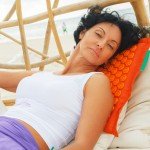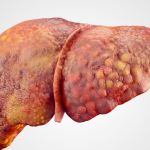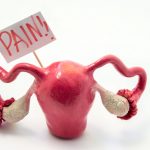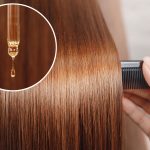Nature Cure: An Imperative in an Age of Indoor Mass-Migration
Vis Medicatrix Naturae
Marcin Padlewski, B Arch, ND
As our dependence on the amenities of the industrial world increases, so does our separation from Nature. Since the built environment promotes comfort and convenience, we now spend most of our lives indoors – our surrogate habitat. The resulting isolation creates a significant and observable deterioration in human health; all physiological systems are negatively affected. In contrast, when physical contact with natural elements – such as daylight, fresh air, and earth – is prioritized through daily contact, the body is nourished, balanced, able to self-regulate, and to heal faster.
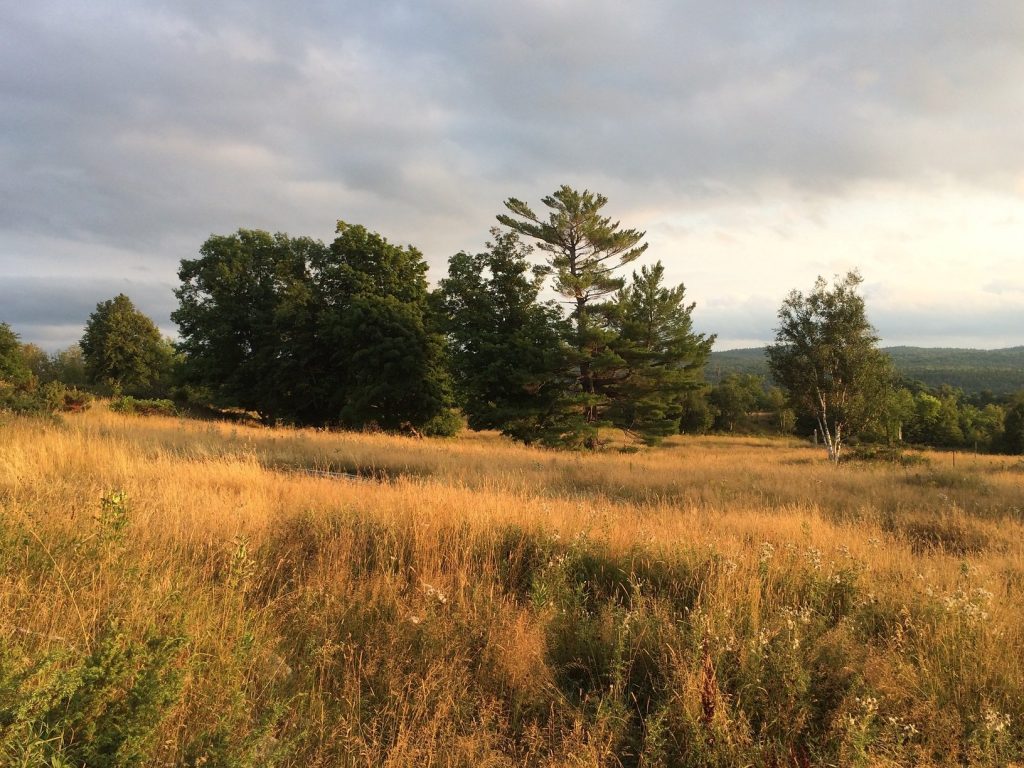
(Madawaska Highlands, Ontario; Padlewski, 2019)
Hazards of the Indoor Life
Rarely do we speak of cities, roads, or buildings as being conducive to “recharging our batteries,” perhaps because the built environment is static and energetically draining. Our love for the fabricated has blinded us from its daily and ongoing side-effects. Rapid worldwide urbanization has quickly exposed its inherent chronic health problems. Only in our recent history have humans begun to spend dramatically more time indoors and minimize physical activity – a trend that has resulted in a significant deterioration of health.1 North Americans, for example, now spend 93% of their lives either in buildings or vehicles.2 It should be no surprise that mental health disorders, obesity, type 2 diabetes, cancer, and cardiovascular disease are linked to contemporary urbanization.1,3 The familiar industry-driven mantra of “making our lives better and easier by design” is flagrantly bad for human health; housing is no exception. The modern glass and concrete skyscraper, coupled with myriad mechanical technologies, illustrates clearly our stark separation from the natural landscape. This condition is an evolutionary mismatch,4 a disconnect between an organism’s adaptations to past environments and its current environment. Our continuing dependency on everything from industrialized food to what I believe is an unprecedented mass migration indoors is maladaptive and destructive of our physical state.
Clearly, a continuing effort to increase contact with nature within cities is one of the key solutions to this problem.3 For example, by interconnecting urban green spaces with neighborhoods, people are more likely to step into the fabric of what was once a primal wilderness. Indoors, specialized design consultancies are now promoting biophilic design principles in large institutional projects, employing Nature-influenced strategies such as exposure to biota, natural forms, and materials.5 However, there is limited discussion regarding the ill-effects of the individual home in the western world. Ideally, we should be spending our waking hours outside – moving, working, and living surrounded by the elements that make us thrive. We are lacking in exposure-time to the un-built.
The human body is Nature. Our physiology not only evolved outdoors; it is also nourished and regulated by a synergistic balance of physical forces and epigenetic environmental factors6; sunlight, atmosphere, water, plants, animals, and earth are all found outside.
The landscape of the Savannah represents our ideal milieu and is considered to be our primal home from an evolutionary perspective.7 In this space, where openness and shelter are balanced, connection to Nature is direct. On some instinctive level, most humans seek to return to this primal setting, but only partially and conditionally. Our climate-controlled interiors, or “ideal” environments, make us soft. Buildings, cars, and synthetic objects are amenities that allow, even encourage, us to live further and further from this origin. Our homes and other buildings contribute to this separation by making the indoor environment stable and convenient, such that a human simply has little need to be outside, and instead is relegated to an unbalanced life in the indoors (Figure 1).
Figure 1. Boxed In
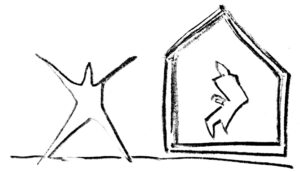
I believe that we are deprived of the full nutritive aspect afforded by living in closer contact with Nature. As a consequence, we have fewer resources to recover when depleted, let alone to deal with any active illness. The simple Nature-connecting methods outlined below are perhaps obvious, but vital: go outside, open your windows, and ground yourself.
Perhaps our most important Nature-cure principle is to increase and maintain year-round daily contact with the elements of the biosphere, wherever we reside. When we begin to live outdoors, every aspect of health benefits, from physiology to spirit, providing us with the best conditions in which to recover from illness and rebalance from a highly artificial world. Of course, we all understand this in principle, but do we exemplify this in our everyday life and practice? The benefits are dose-dependent – thus a regular regimen is essential. Become aware of the time spent outdoors, and see if you can beat the daily average of 1.5 hours. Encourage your patients to do the same.
Go Outside
All the vital elements are “out there”… Shinrin-yoku, or forest bathing, is currently one the most researched health-promoting activities in Nature; as Dr Qing Li would advocate, forest bathing is absolutely essential to human health.8 Multiple studies have shown that forest bathing can: lower blood pressure and increase heart rate variability; boost the immune system by elevating natural killer cells and the anti-cancer protein granulysin; increase energy; decrease anxiety, depression, and anger by lowering cortisol and adrenaline levels; reduce stress and bring about a state of relaxation by enhancing the parasympathetic response; and improve the quality and length of sleep.9 The good news is that even a once-monthly exposure can be beneficial. Imagine adopting daily contact with Nature: green exercise, is exercise squared, right? Ie, when exercise is done in close contact with nature, the benefits are far greater. If a forest is not easily accessible, local parks or well-treed neighborhoods are a good start.
Exposure to uninterrupted daylight is another vital regulator. Circadian regulation synchronizes the body; our physiology responds to the duration, color, and presence or absence of daylight. The fluctuating patterns dictate an ideal periodicity for rest and recovery, key to proper cognitive functioning and sleep. Light pollution and fragmented exposure to daylight have been identified as major reasons why the average sleep duration is decreasing worldwide.7 As a result of artificial light, screen-time, and environmental isolation, technology has imposed a mechanistic and rigid time-schedule on our natural temporal tide.
A building’s implicit function is to provide shelter by “containing” and “keeping out” – an obvious and absolute necessity. But we are quite preoccupied with the function of containing – a yin aspect of our inhabitable environment. Consider the polar yang – the space outside, the “un-containing” that surrounds any building. It is this expanding space of the unbuilt that we tap into for therapeutic potential by simply by stepping outside.
By restraining the size and scale of dwellings, we encourage more exterior activity. Nomadic tents are good examples, as they provide just enough protection against weather extremes, but daily life is conducted mostly outdoors. Contemporary design can facilitate this as well by taking cues from traditional or vernacular houses around the world. I have also observed in my design practice that when dwelling spaces are smaller, we are more likely to be outside and feel better as a result. The “tiny house” movement, co-housing,10 and even camping are good examples of this tendency in the West.
Test this yourself: Rate your present mood (0-10 scale) and energy (0-10), dress for the weather, then go outside for a 20-minute walk, and rate again. Although walking anywhere is fine, forests and most natural landscapes are the ideal setting.
Open Your Windows
Exposure to seasonal change is as important as water and sunshine; it will stress and challenge the system and in return create resiliency, strength, and health. When the body is isolated from Nature, it becomes less tolerant of change, weaker, and more dependent on external energy resources like heat and climate control.
When daily or regular outdoor contact is not possible, building elements should be scrutinized. Windows are a particular double-edged sword. We certainly benefit immensely from the view, light, and radiant heat they provide, but they keep out the changing atmosphere. Commonly idealized interiors favor large, glazed openings. Ironically, the real effect of “bringing nature in” can be so successful that, as a result, more time is spent inside and the separation remains.
Indoor air pollution is emerging as a serious health risk. Building materials, paints, televisions, computers, printers, and even toasters and cooking, are all emitting toxic gases and particulates. Their levels have been found to exceed even the safety limits for outdoor pollutants.11,12 By encouraging once again the use of operable windows and regular venting, we are exchanging and cleaning the air we breathe more profoundly than is otherwise possible, and actively connecting to the outdoor atmosphere year-round. Now, this may seem like a chore to some; however, it can be reframed as physical exercise and a mindful act that engages us with the atmosphere while simultaneously prying us away from the programmable thermostat. Decreasing our reliance on complex heating and ventilating technologies may be worth reconsidering, since it is precisely these tools that over-modulate an otherwise dynamic – and therefore strengthening – atmosphere.
Test this yourself: Vent your bedroom (if you haven’t already) for 15 minutes, once in the morning after waking and then again just before going back to bed. Rate your sleep (0-10).
Ground Yourself
Earthing, or grounding, is the physical reconnection of the body to the earth (Figure 2). Grounding has the effect of reducing pain, decreasing inflammation, improving sleep, speeding up healing time, reducing blood pressure, increasing one’s ability to handle stress, improving energy, and reducing jet lag, to name but a few of its benefits.13 The earth’s surface is also the largest source of free electrons, which flow into the body when connection is made; it is hypothesized that they are responsible for the observed antioxidant – thus anti-inflammatory – effect.14 Before the advent and widespread use of rubber soles, we were more like all other living species on the planet, in almost constant connection with the earth. Even birds, when not laying, will preferentially rest directly on the ground. By touching the earth, say with our bare feet, we benefit by seeing an instant drop in our body’s electrical potential – a charge commonly induced by standing next to anything with an electric current. Our built environment is a well-known source of electromagnetic frequencies (EMF); any electrical appliance or wiring will induce an electrical potential in the body. We are only beginning to explore the effect of EMFs on health. Through the act of grounding, almost every aspect of our physiology is improved, from inflammation to endocrine regulation.15
We can ground by establishing direct contact with the earth or by consciously avoiding insulating materials such as rubber and synthetics, perhaps even by returning to conductive leather soles. When we are “stuck” inside, connection can be achieved through grounding mats and other products that are connected via a copper cable to the ground. Flooring surfaces such as tamped earth and clay seen in traditional dwellings are conductive, since they are a direct extension of the earth’s surface. In modern construction there is great need to develop conductive flooring materials, since most of our construction is electrically insulating. “If you don’t feel well, for whatever reason, just make barefoot contact with the Earth for a few minutes and see what happens.”13
Figure 2. Earthing
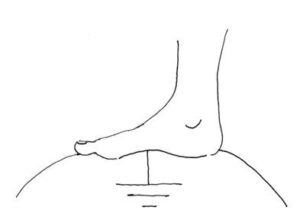
Test this yourself: Rate a given pain (0-10), then place your bare feet in direct contact with the moist soil. Observe how the pain decreases, often within a matter of a half-hour.
Conclusion
The paradox of the built environment lies in its role to not only provide shelter, but to also encourage us to spend more time outdoors where we thrive. If extensive indoor dwelling time is inevitable (as during convalescence), contact with the elements can be increased by using operable windows, conductive (grounded) surfaces, and smaller spaces that inspire exterior integration. Good human-scaled architecture can certainly mediate this reconnection. Daily unfiltered, multisensorial contact with all aspects of Nature is the key to nourishing our civilization-induced deficiency.
References:
- Lee Shiroma EJ, Lobelo F, et al. Effect of physical inactivity on major non-communicable diseases worldwide: an analysis of burden of disease and life expectancy. Lancet. 2012;380(9838):219-229.
- Klepeis NE, Nelson WC, Ott WR, at al. The National Human Activity Pattern Survey (NHAPS): a resource for assessing exposure to environmental pollutants. J Expo Anal Environ Epidemiol. 2001;11(3):231-252.
- Africa J, Logan A, Mitchell R, et al. The Natural Environments Initiative: Illustrative Review and Workshop Statement. November 2014. Harvard School of Public Health.
- Lloyd E. Wilson DS, Sober E. Evolutionary Mismatch And What To Do About It: A Basic Tutorial. September 25, 2011. Available at: https://evolution-institute.org/wpcontent/uploads/2015/08/Mismatch-Sept-24-2011.pdf. Accessed September 13, 2019.
- Ryan CO, Browning WD, Clancy JO, et al. Biophilic Design Patterns: Emerging Nature-Based Parameters for Health and Well-Being in the Built Environment. ArchNet-IJAR. 2014;8(2):62-76. Link to article is available at: https://tinyurl.com/y3k3xuhs. Accessed September 13, 2019.
- Lipton B. The Biology of Belief: Unleashing the Power of Consciousness, Matter & Miracles. Carlsbad, CA: Hay House Publishing; 2015.
- Orians GH. The Savanna Hypothesis. In: Shackelford TK, Weekes-Shackleford V, eds. Encyclopedia of Evolutionary Psychological Science. New York, NY: Springer International Publishing; 2016.
- Li Q. Forest Bathing: How Trees Can Help You Find Health and Happiness. New York, NY: Viking Publishing; 2018.
- Kantermann T. Circadian biology: sleep-styles shaped by light-styles. Curr Biol. 2013;23(16):R689-R690.
- McCamant K, Durett C. Cohousing: A Contemporary Approach to Housing Ourselves. 2nd ed. Berkeley, CA: Ten Speed Press; 1994.
- Twilley N. The Hidden Air Pollution in Our Homes. April 1, 2019. The New Yorker. Available at: https://www.newyorker.com/magazine/2019/04/08/the-hidden-air-pollution-in-our-homes. Accessed September 14, 2019.
- Indoor Chem. Media Coverage. Available at: https://indoorchem.org/media-coverage/. Accessed September 14, 2019.
- Ober Sinatra ST, Zucker M. Earthing: The most important health discovery ever! Laguna Beach, CA: Basic Health Publications; 2014.
- Oschman JL, Chevalier G, Ober Chapter 38: Biophysics of Earthing (Grounding) the Human Body. In: Rosch PJ, ed. Bioelectromagnetic and Subtle Energy Medicine. Boca Raton, FL: CRC Press; 2015: 427-450.
- Sokal K, Sokal P. Earthing the human body influences physiologic processes. J Altern Complement Med. 2011;17(4):301-308.
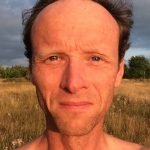 Marcin Padlewski, B Arch, ND, graduated from the Canadian College of Naturopathic Medicine (CCNM) in 2015. Dr Padlewski is engaged in a multi-disciplinary practice in Ottawa, ON, that spans naturopathic medicine, yurt design, and therapeutic landscape design. The focus of his clinical practice includes acupuncture, EMDR, herbal medicine, and traditional dietary medicine. As a keen advocate of Nature-Cure principles, he places particular emphasis on year-round, outdoor physical activity. He is currently investigating elements of wild landscapes for intentional therapeutic purpose.
Marcin Padlewski, B Arch, ND, graduated from the Canadian College of Naturopathic Medicine (CCNM) in 2015. Dr Padlewski is engaged in a multi-disciplinary practice in Ottawa, ON, that spans naturopathic medicine, yurt design, and therapeutic landscape design. The focus of his clinical practice includes acupuncture, EMDR, herbal medicine, and traditional dietary medicine. As a keen advocate of Nature-Cure principles, he places particular emphasis on year-round, outdoor physical activity. He is currently investigating elements of wild landscapes for intentional therapeutic purpose.




